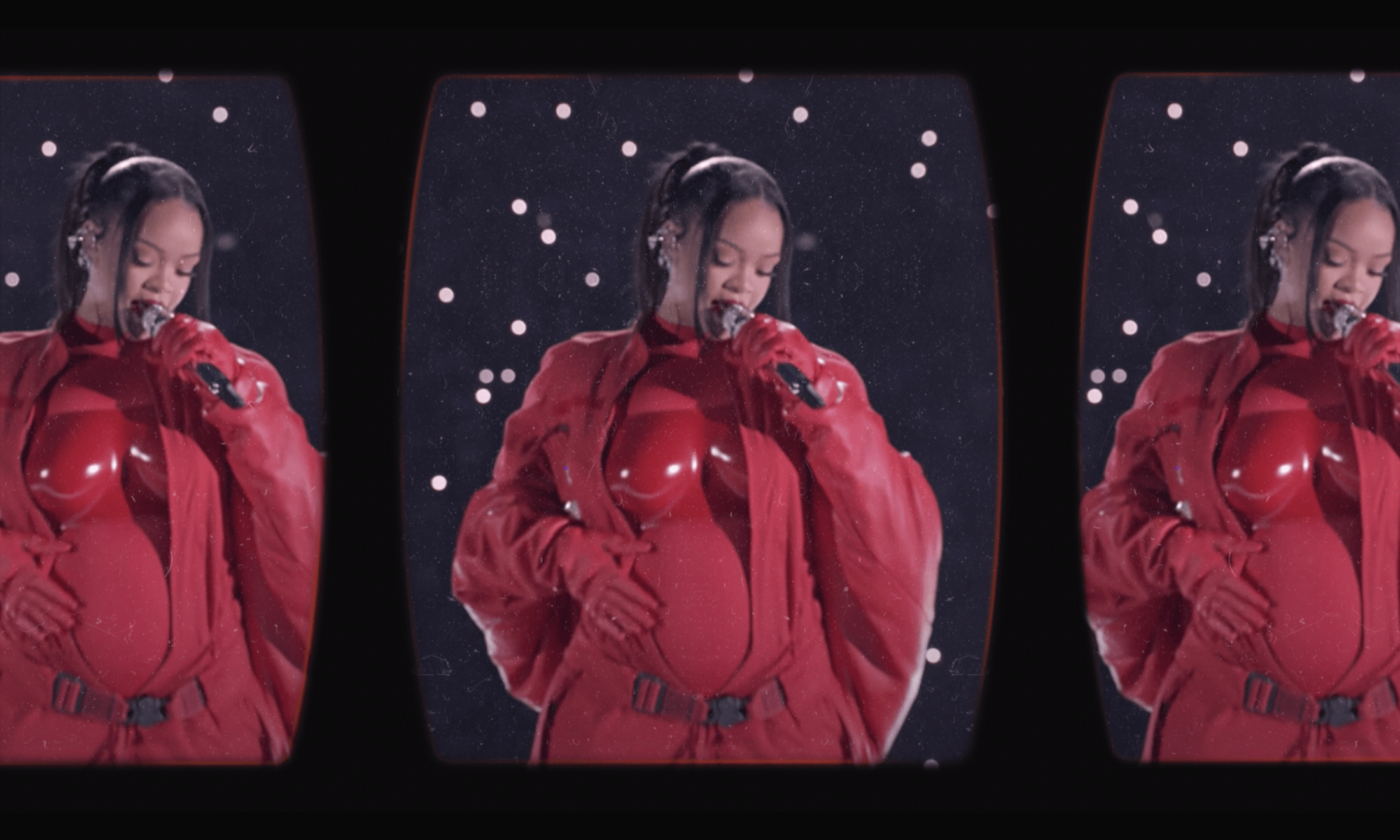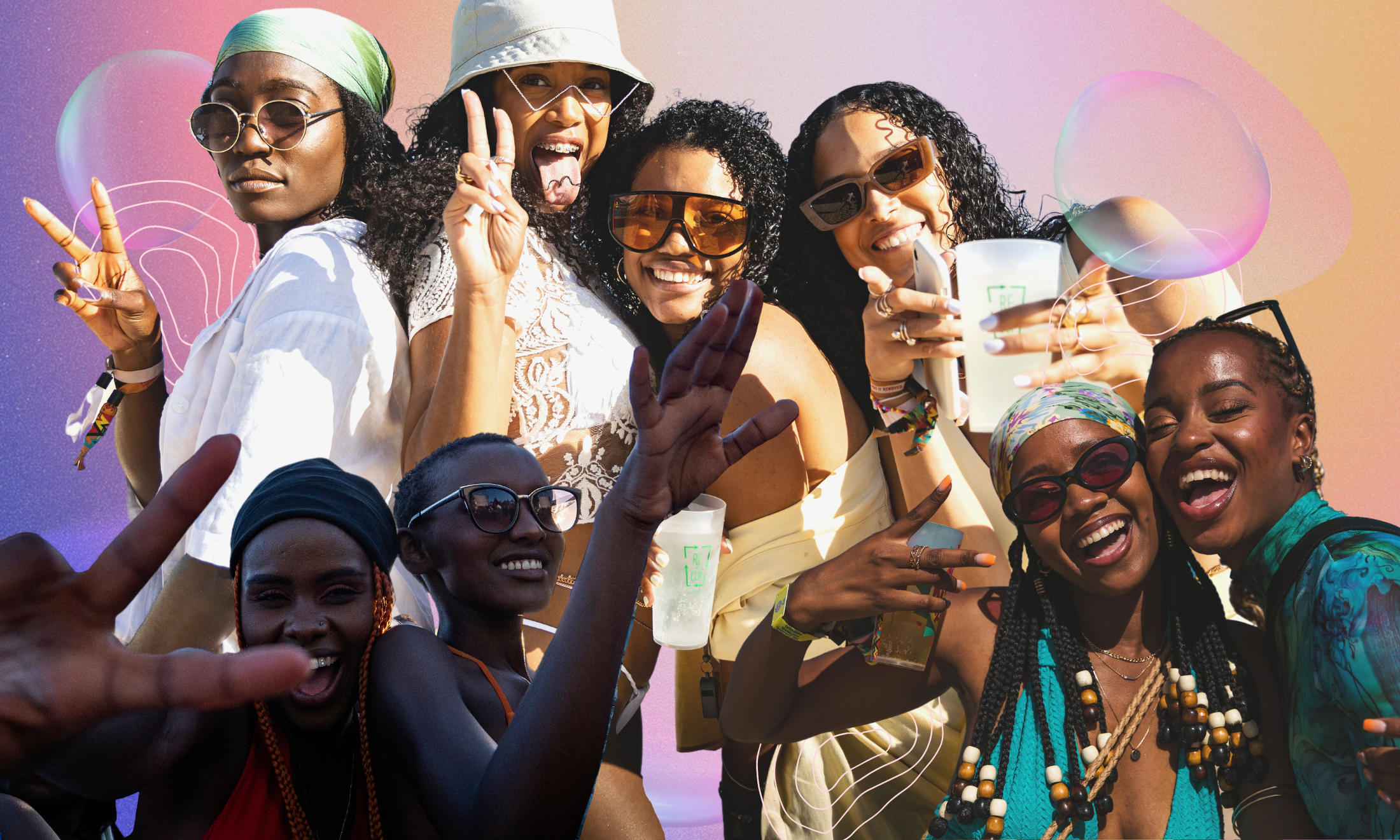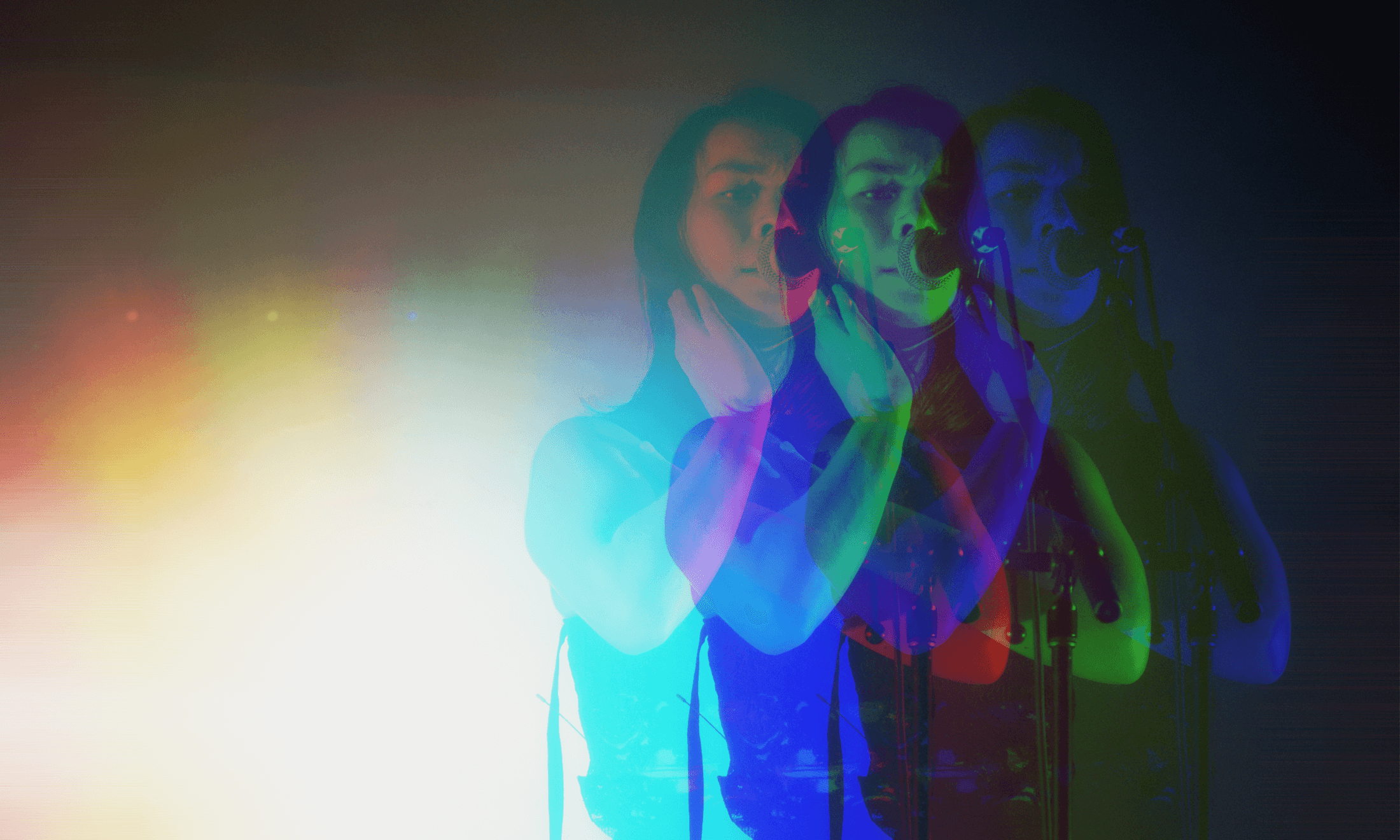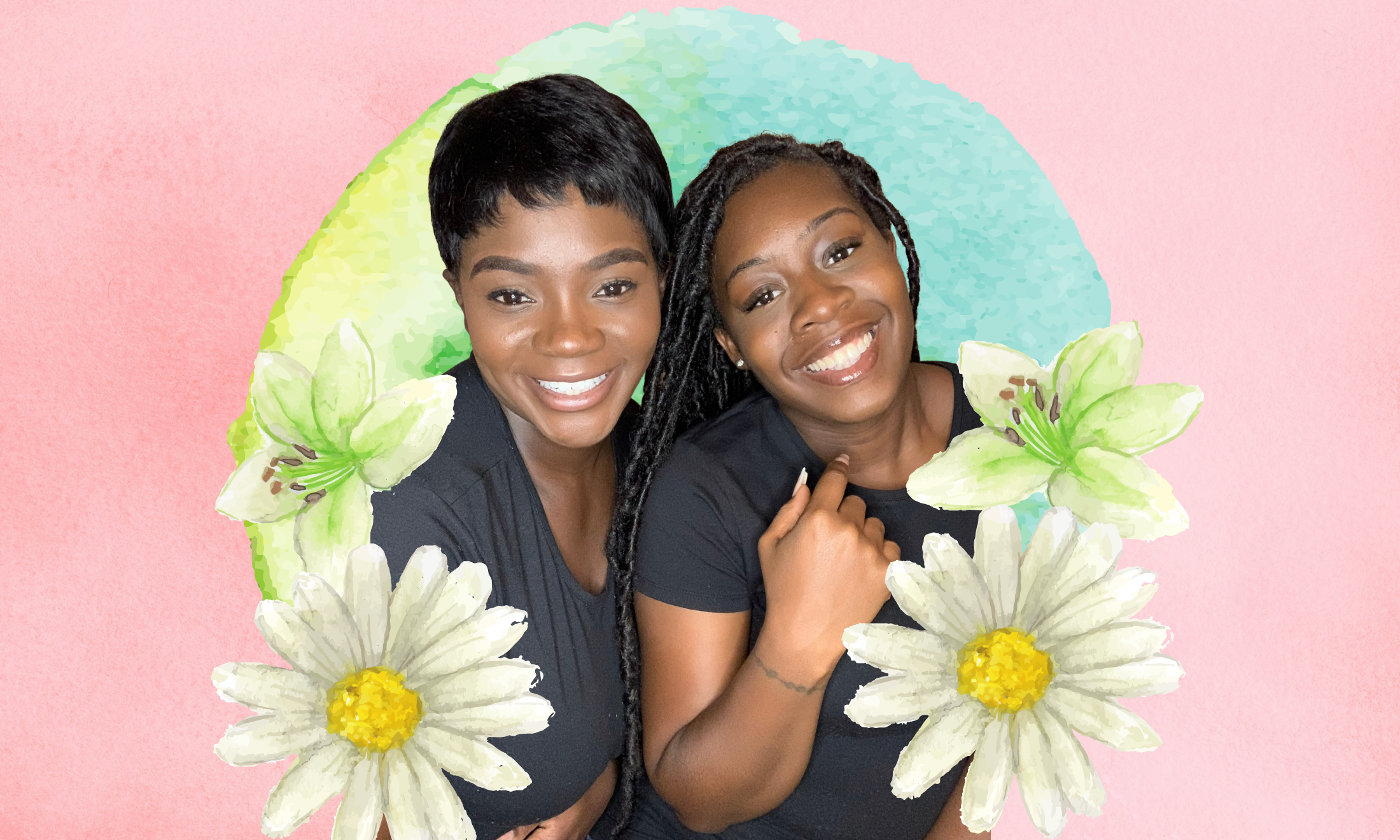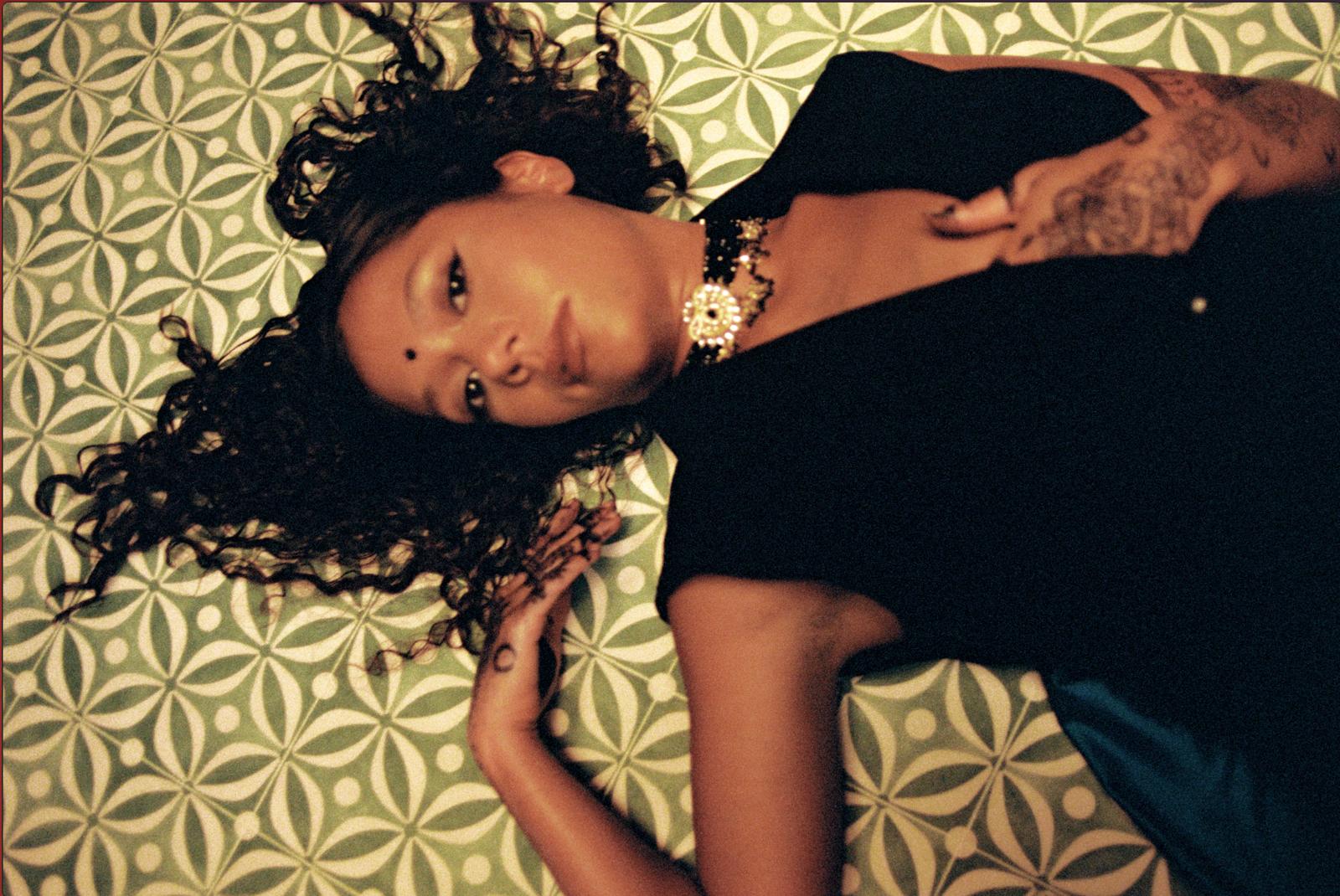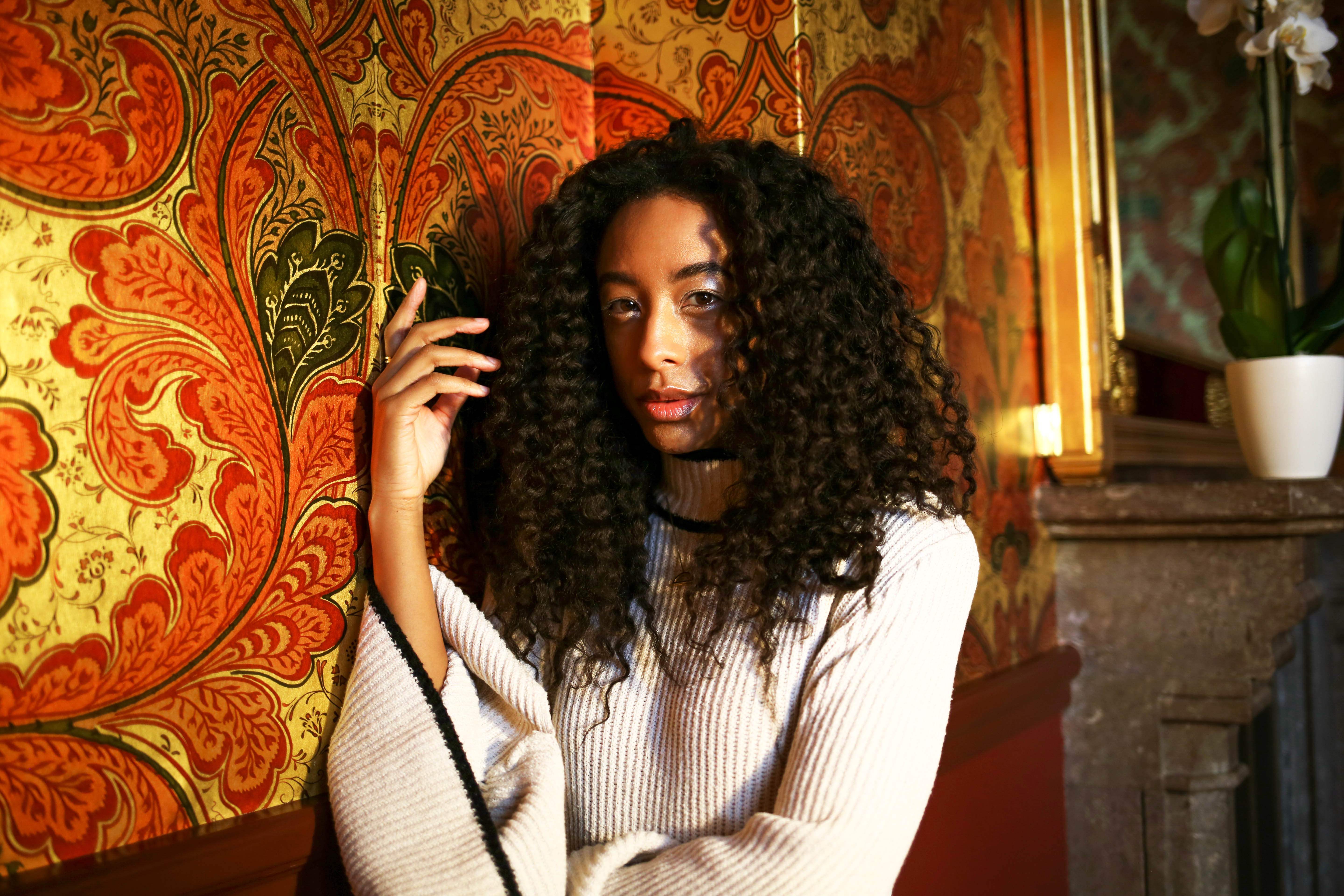
Corinne Bailey Rae on her nomadic lifestyle, racial identity and pregnancy
The singer speaks to gal-dem on the theme of home for our second print edition – but it turns out her home is in more than one place.
Charlie Brinkhurst Cuff
16 Oct 2017
From our second print edition, on the theme of home. Out now.
If you’re a voracious reader, you’ll know something about being drawn into worlds that aren’t your own. It’s a tantalising prospect, especially for introverts. What I discovered earlier this year, is that singer-songwriter Corinne Bailey Rae has the same magical quality as an enchanting novel. It’s a strange idea but bear with me, because if you’re lucky enough to meet her and spend time with her, to listen to her music, you’ll understand what I mean. Her world, soundtracked by sweet, soulful vocals, a picked guitar and stretching across oceans thanks to her nomadic lifestyle, has just a pinch of magic – black girl magic. She’s created it in her image.
Bailey Rae was part of the soundtrack of my youth (her debut came out when I was 12), but thanks to her ageless looks it’s difficult to believe she’s not just a couple of years older. Growing up in Scotland as a mixed-race girl amongst a blisteringly white population, she offered something that I didn’t realise I needed. Her image was attainable and aspirational. Here was a black, mixed-race British woman making beautiful music with her hair in natural curls, and the type of expressiveness that made her immediately relatable. I sang three of Bailey Rae’s songs (‘Like a Star’, ‘Till it happens To You’ and ‘Choux Pastry Heart’) from her eponymous debut album Corinne Bailey Rae for my music exams – A*’s you know – and, like everyone else during the summer of 2006, had her huge hit ‘Put Your Records On’ playing on repeat for months.
But much of the narrative around Bailey Rae’s music has been dominated, not without good reason, by the death of her husband Jason Rae, who passed away in 2008. In an interview with The Pool she spoke about how one of her abiding memories of that time was the kindness of family and friends. But also the silence, until, we have to presume, she was able to pick up her guitar and start to make her second album, The Sea – which was released two years after his death and alluded to her heartbreak. But I thought that finding out about her life from the perspective of where she feels at home might offer a different slant on things – especially coming after the release of her third studio album The Heart Speaks in Whispers in 2016, a more electronic outing but still very much in Bailey Rae’s smooth style, which shows that she’s been moving forward in her life.
Home for the singer was never going to be a simple topic. Because in her world, it’s more than one place.
I first meet the 38-year-old at St Pancras Renaissance Hotel in north London. We wanted to shoot Bailey Rae somewhere she associated with with our theme, and her management enthusiastically recommended the location. It’s a huge, beautiful, gothic space; basically embedded into St Pancras Station – you can see the Eurostar rolling out towards Paris from some of the huge windows. It opened in 1873 and was well-known for its 18ft high rooms, filled with luxurious trimmings like walnut furniture with gold inlay, before falling into disrepair around the time of WW2. It was renovated in the 1990s, after it was announced St Pancras was turning international. Later, during our interview, Bailey Rae tells me it’s always been a dream of hers to roll out of bed and into a new city. “It’s kind of a gateway to London,” she explains.
Bailey Rae turns up to the hotel room door with a towel wrapped around her head and lets us dance around her huge suite while she gets ready, slipping in and out of the clothes we’ve brought to her for the shoot. She’s very petite, dainty, and, of course, charming, and totally interested in what gal-dem is about. A few weeks later she attends gal-dem’s second V&A takeover in Stratford, east London, and then finally, in July, we are able to sit down for our interview. The first thing she tells me about the hotel illustrates her romantic view of the world. “There’s some really old suites that have got ceilings this high [gestures] as you’re lying in bed and you look to the ceiling and it’s so far away. I had the idea of keeping a case here… I always wanna be able to just move quickly in London and make last-minute decisions,” she says.
“At first we were brown and then we were half-caste and then mixed-race and then dual-heritage and then it was ok to just be black” – Corinne Bailey Rae
The singer’s first home was Leeds, where she grew up with mum, dad, and two sisters, Rhea and Candice Bailey. By all accounts she had a happy childhood; in ‘Butterfly’ from her first album she sings, “In my mother’s house / There was happiness / I wrapped my myself in it / Was my chrysalis”. She and her second husband, Steve Brown, who she married in 2013, still have a home there, where they spend some of the year – in part to get away from the stressors of music industry. “It’s not super isolated but it is an old house, it’s an 1860s house, and it’s in quite a quiet street,” she says. “I really love being able to go out into the Dales and be in wildness. You don’t have to go far in Yorkshire to be in wild areas with rocks and hills and old churches. I feel more connected to the north of England and its industrial past and the wildness of the landscape.”
Sipping on honey tea to soothe her throat as we sit in a quiet corner of the St Pancras, she tells me more about her childhood and how it led to the nomadic lifestyle she leads today. “We couldn’t really afford to travel so I think I didn’t leave the country until…maybe I was 17, and I went on holiday with a friend,” she says. “To me, travelling and work have a really strong link to home. That sense of home is always with me because my husband is always with me.” With her band and her husband, she’s been all around the world, finding spots in South Korea, LA and New York that she identifies with. “I really like the idea of travel and the idea of being a nomad. I didn’t understand that term until really recently. A nomad means that you visit ‘known homes’. They would always have to know, ‘This is where we’re going this time of year because we know it’s fertile’.”
From earlier conversations I know that Bailey Rae is interested and articulate on the topic of race. She was enamoured by the Kerry James Marshall exhibition in LA and recommends to me a book by Nell Irvin Painter, on the history of white people. “My dad had come from the Caribbean, but he didn’t talk to me a lot about racism which I think was a deliberate thing because he wanted to protect us,” she says about her childhood. “He didn’t want to suggest this sort of inherent thing […] And then my mum was very engaged. I learnt about South Africa and apartheid.”
Although she admits that she and her sisters would “pick the peas out of our rice and peas”, and didn’t necessarily know their black Caribbean nana’s culture “as well as we should have done”, it’s clear that she is very in touch with her blackness. When she performs at AFROPUNK London a few weeks after our interview, a festival which loudly celebrates black culture, Matthew Morgan, the founder of AFROPUNK, tells me that Bailey Rae had been very keen to play. “She approached me multiple times,” he says. On stage she tells the crowd: “I wish this community had been here for me when I was 15.” I’m at the front of the audience, screaming every lyric back at her like an embarrassing “stan” (mega fan).
There are mixed race people on both sides of Bailey Rae’s family – she has “brown cousins” on her mum’s English side as well as her dad’s. When she comments on her cousin’s shades, it reminds me that I’ve read that the term she prefers to use to describe herself is “brown” too. “At first we were brown and then we were half-caste and then mixed-race and then dual-heritage and then it was ok to just be black,” says Bailey Rae, obviously aware of the debate around how mixed-race people should define themselves, but disparaging. “I feel like I don’t really have a term if I’m really honest. That’s why I say it [brown] in like an almost silly way. As it’s almost like I’ve been labelled so many different things in the past 38 years that none of them feel familiar or satisfying.”
Despite her uncertainty over her racial descriptor, Bailey Rae’s politics are well-formed, even if they don’t always appear in her music. Talking about ‘Green Aphrodisiac’, from her latest album, she says: “I feel like it’s a political act in and of itself to write a song as a black woman being like, ‘I am a person singing about love’. I think a lot of people interpret or misinterpret my music as that I am somehow unaware of these things or don’t want to engage in these things. My way of engaging with it is saying, what are we ultimately trying to get to? We’re ultimately trying to get back to the garden, to this stage where we can express ourselves, yes part of a group, but [also] as individuals who make choices and experience joy.”
“I’d rather my six-year-old be riding dinosaurs and chasing dreams. It’s not that I don’t want them to be aware of the struggle, it’s that I don’t want them to be defined by the struggle” – Corinne Bailey Rae
Her lyrics, which she likes to write in “different rooms” in her house, are relatable and accessible to anyone who feels love, and if we presume that The Heart Speaks in Whispers is a little self-confessional, she’s certainly deeply in love with her husband. In cello-led, woozy ballad, ‘Hey, I Won’t Break Your Heart’ she sings: “Here in the twilight of one endless summer / You’ve got me waiting like a teenaged girl / My eyes wide with starlight / But folded in my new dress, the memories / Love is more hesitant a second time.” And as our conversation goes on I sense something else on her mind, which is of course deeply intertwined with love: children. Before our interview, while prepping, I had stumbled upon a 2016 Independent article where the interviewer had asked her if she planned to have kids. “That’s a little too private, really – considering I’m 36 years old,” she had said to him.
All too often female celebrities are asked about children in a sexist way their male counterparts are not. But as our conversation veers towards the subject, I’m straining not to ask her about whether she wants kids, as it appears to be on her mind. She tells me, for instance, about trying to find books for her nieces and nephews about black people that didn’t just focus on the struggles we have had to go through. “You can get really cute children’s books where the character is black and she’s just having an adventure on a dinosaur […] The rest of the books are about Rosa Parks, or Martin Luther King, and I just think that a six-year-old opening up a book and seeing people get beaten up and dogs attacking them – is that a good thing for them to see? I’d rather my six-year-old be riding dinosaurs and chasing dreams. It’s not that I don’t want them to be aware of the struggle, it’s that I don’t want them to be defined by the struggle. I think the greatest gift we can give the next generation is to make them feel like they’re not in a war.”
It’s not a huge surprise then, when we’re discussing the fact that she’s often seen in opposition to “sexy” women (“I think that if you’re a 12-year-old girl and you get DD boobs you didn’t choose to get those boobs, you also didn’t choose the way that culture looks at you”), that she reveals she’s pregnant. “As you might not be able to tell,” she laughs.
Any kid that gets to be part of her world is lucky. I reckon she’s going to make a great mum.
CREDITS
Styling: Hannah Gooding
Photography: Kiran Gidda
Make-Up: Portia Ferrari
Creative Direction: Charlie Brinkhurst-Cuff
CLOTHES
Look #1: Jumper by Mango
Trousers by Whistles
Shoes by ASOS
Necklace and ring by Boyscouts
Look #2: Top by Style Mafia
Trousers by ASOS White
Shoes by Garment Project
Necklace and ring by Boyscouts
Look #3: Top by River Island
Trousers by I and Me
Shoes by Ouigal
Necklace and ring by Boyscouts

